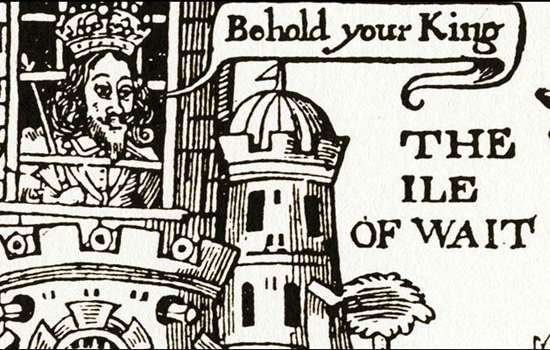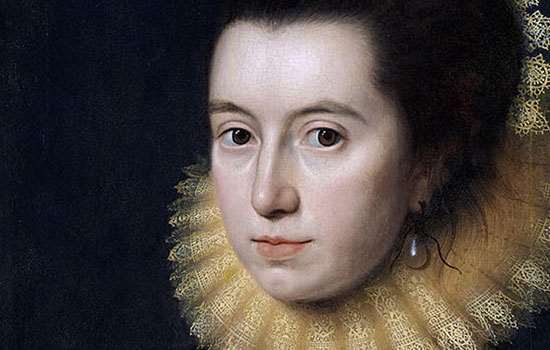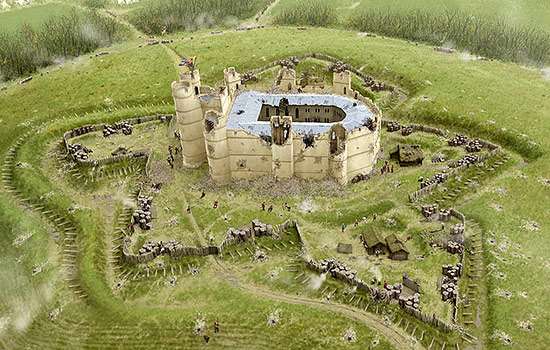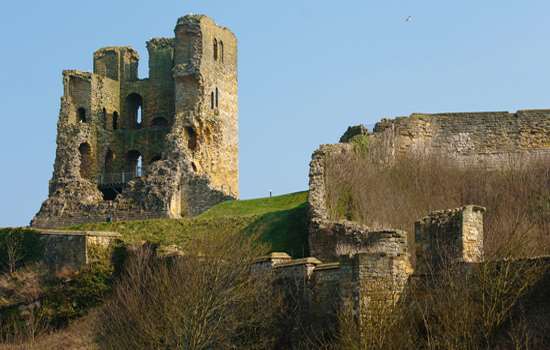Key Facts
- The English Civil Wars comprised three wars, which were fought between Charles I and Parliament between 1642 and 1651.
- The wars were part of a wider conflict involving Wales, Scotland and Ireland, known as the Wars of the Three Kingdoms.
- The human cost of the wars was devastating. Up to 200,000 people lost their lives, or 4.5% of the population. This was as great a loss, proportionally, as during the First World War.
- The causes of the wars were complex and many-layered. At the centre of the conflict were disagreements about religion, and discontent over the king’s use of power and his economic policies.
- In 1649, the victorious Parliamentarians sentenced Charles I to death. His execution resulted in the only period of republican rule in British history, during which military leader Oliver Cromwell ruled as Lord Protector of the Commonwealth. This period is known as the Interregnum, and lasted for 11 years until 1660 when Charles’s son, Charles II, was restored to the throne.
- The Civil Wars saw the beginning of the modern British Army tradition with the creation of the New Model Army – the country’s first national army, comprised of trained, professional soldiers.
- Many castles were besieged during the wars, resulting in severe damage. Others were deliberately destroyed, or ‘slighted’, after the fighting. The ruinous state of many of England’s castles that we see today can be traced back to these events.
The Civil Wars Explained
Journey through one the most complex and turbulent periods in English history with our comprehensive guide to the events of the Civil Wars.
We look at what caused the wars, how they unfolded, and what their legacy was – from their origins in the early years of Charles I’s reign to Parliament’s short-lived victory and the subsequent Restoration of the monarchy.
Read the full article
Key Figures and Stories
-

Charles I
Read about the man at the centre of the most turbulent period of England’s history, and learn about the statue dedicated to him in Trafalgar Square, London.
-

A Royal Prisoner at Carisbrooke Castle
Read about Charles I’s time as a prisoner at Carisbrooke Castle on the Isle of Wight, including his many attempts to escape.
-

Jane Whorwood: Royalist Spy
Jane Whorwood was one of the key agents behind attempts to free Charles I from captivity on the Isle of Wight, notably from Carisbrooke Castle, in 1648.
-

Charles II and the Royal Oak
Find out how the future king escaped from Parliamentarian forces after the Battle of Worcester in 1651, giving English history one of its greatest adventure stories.
-

The Battle of the Downs
This major sea battle between the Dutch and the Spanish in 1639 exposed the weakness of the English navy. Read more about the battle and how it destabilised Charles I’s reign in the years running up to the first Civil War.
-

The Civil Wars and the British Army
Discover how the reorganisation of the Parliamentarian army during the Civil Wars marked the beginning of the modern British Army tradition.
Living Through War
To live in the middle of the 17th century was to endure some of British history’s most distressing and divisive events. Discover just some of the people associated with our properties who lived through them, and how they carried on with their lives and professions.
-

Margaret Cavendish
Novelist, poet and philosopher Margaret Cavendish travelled to Paris with Queen Henrietta Maria to escape the violence of the Civil Wars, and remained in exile there throughout the Interregnum. Against the backdrop of this political upheaval, she wrote prolifically on sex, gender, and natural and political philosophy.
-

Lady Anne Clifford
In 1649 Lady Anne Clifford, a staunch Royalist, left London to reclaim her family estates in northern England. Finding her lands badly neglected and the five Clifford castles much damaged by the events of the Civil Wars, she devoted the final three decades of her life to restoring them.
-

John Dryden
Poet John Dryden briefly served in Cromwell’s government and on his death commemorated him in ‘Heroic Stanzas’. After the Restoration, however, his loyalties shifted and he wrote several long poems praising Charles II. The king later officially employed Dryden as Poet Laureate. Read more about the poet and where to find his London blue plaque.
-

Samuel Pepys
Diarist Samuel Pepys witnessed Charles I’s execution as a 15-year-old boy. He held Republican sympathies that day, but, like Dryden, he swiftly adopted Royalist loyalties once Charles II was restored to the throne. It was to Pepys that Charles II recounted his dramatic escape from Boscobel House. Read more about the famous chronicler, and discover his London blue plaque.
Castles Under Siege
Discover the places in English Heritage’s care that were besieged during the wars.
-

Donnington
Discover how Donnington Castle in Berkshire held out for King Charles I during a 20-month siege in 1644–6, and played a key role in the Second Battle of Newbury.
-

Goodrich
In 1646 Goodrich Castle was the scene of one of the most hard-fought sieges of the first Civil War, which Parliament finally won with the aid of a huge mortar, known as Roaring Meg.
-

Old Wardour
In 1643 Lady Blanche Arundell defended Old Wardour against Parliamentarian attack for six days before being forced to surrender. Read more about the siege and the castle’s fate after the wars.
-

Scarborough
Scarborough Castle was besieged twice during the Civil Wars, and during one of them, the bombardment was so intense that half the tower collapsed. Read about the sieges, and more of the castle’s history, here.
-

Pendennis
In 1646 Pendennis was one of the last Royalist strongholds to hold out against the Parliamentarian army. About 1,000 soldiers and their dependants endured a five-month siege, only surrendering when their food supplies ran out.
-

Beeston
Beeston Castle passed between Royalist and Parliamentarian hands several times during the Civil Wars. The Royalists finally surrendered in 1645, and the castle was slighted.
-

Walmer
Rebellion broke out in Kent in 1648, in support of the imprisoned king. Sailors from the English navy in the Downs captured Sandown, Deal and Walmer castles, but all were eventually recaptured by Parliament.
-

Deal
Walmer’s neighbour, Deal Castle, also saw battle in 1648, and held out against a ferocious siege for nearly three months before finally succumbing to Parliament. Read more about Deal’s history.
Explore More
-

Boscobel House
Explore the history of Boscobel House, where Charles II hid while fleeing Parliamentarian soldiers in 1651.
-

White Ladies Priory
Read about Boscobel’s sister site, where Charles II first arrived after his flight from the battle of Worcester. It was here that he adopted his disguise as a peasant, and plotted his escape.
-

Cromwell’s Castle
Standing on a rocky promontory in the Scilly Isles, this round tower was built after Parliament’s conquest of the Scillies in 1651 and is one of the few surviving Cromwellian fortifications in Britain. Read more about its history.
-

Life under siege at Goodrich Castle
The 17th-century objects found at Goodrich Castle help us to imagine what life at the castle was like during the Civil War siege. View some of them in detail here.
